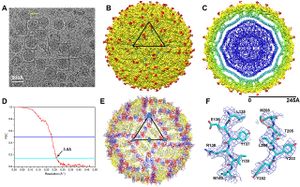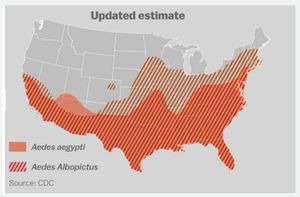User talk:CrowJ
Section
By: Jack Crow

Zika virus (ZIKV) is a member of the virus family Flaviviridae and the genus Flavivirus.[1] It is spread by Aedes mosquitoes, for instance A. aegypti. The virus was first isolated in the Zika Forest of Uganda, in 1947.[2] Zika virus is related to other Flaviviruses: dengue, yellow fever, Japanese encephalitis, and West Nile viruses.[3] The virus causes a fever, often with none or only mild symptoms, and go unrecognized in the infected host. In 2013, the virus spread eastward across the Pacific Ocean to French Polynesia, New Caledonia, the Cook Islands, and Easter Island, and in 2015 to Mexico, Central America, the Caribbean, and South America, notably in Brazil. As of 2016, the illness cannot be prevented by medications or vaccines.[4] Zika is thought to spread from an infected pregnant women to the baby. The CDC has linked infant infection with microcephaly and other severe brain problems. Zika infections in adults has been shown to cause Guillain-Barré syndrome.[5] The purpose of this paper is to examine the evolution, the development of virulence in the virus and the link between severe autoimmune-neurological syndrome in infected human hosts and the virus.
Section 1
Include some current research, with at least one figure showing data.
Every point of information REQUIRES CITATION using the citation tool shown above.
Section 2
Include some current research, with at least one figure showing data.

Section 3
Include some current research, with at least one figure showing data.
Section 4
Conclusion
References
- ↑ http://journals.plos.org/plosntds/article?id=10.1371/journal.pntd.0004530
- ↑ http://www.jgid.org/article.asp?issn=0974-777X;year=2016;volume=8;issue=1;spage=3;epage=15;aulast=Sikka
- ↑ http://www.jgid.org/article.asp?issn=0974-777X;year=2016;volume=8;issue=1;spage=3;epage=15;aulast=Sikka
- ↑ http://www.cdc.gov/zika/symptoms/
- ↑ http://apps.who.int/iris/bitstream/10665/204961/1/zikasitrep_7Apr2016_eng.pdf?ua=1
- ↑ http://www.vox.com/2016/4/6/11348908/zika-science
Authored for BIOL 238 Microbiology, taught by Joan Slonczewski, 2016, Kenyon College.
